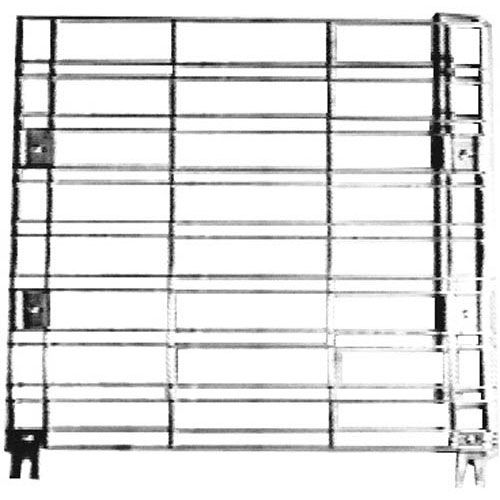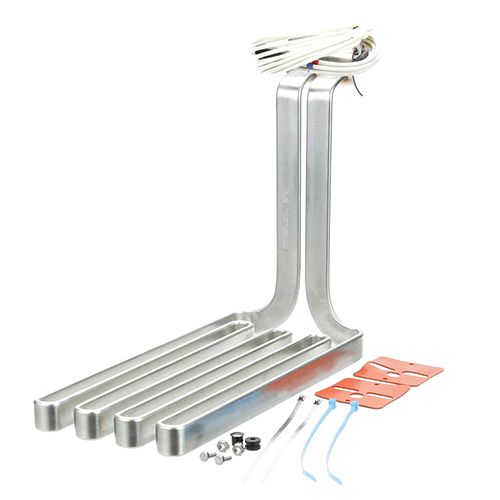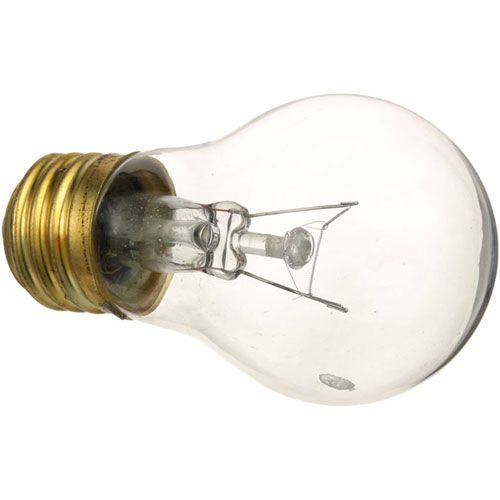How to Change a Light Bulb in an Oven?
The oven light plays a crucial role in Commercial kitchens, enabling cooks to monitor dishes without disrupting the cooking process. Over time, even durable high-temperature oven light bulbs can burn out, requiring replacement to restore optimal functionality. For busy commercial kitchens, understanding how to perform an oven light bulb replacement is a valuable skill that saves time and avoids unnecessary costs. This guide covers everything you need to know, from identifying signs of a failing bulb to safely and effectively replacing it. With the right tools and steps, you can easily tackle this essential task.
Understanding the Importance of Light Bulbs in Commercial Ovens
The oven light bulb plays a critical role in ensuring cooking precision. In a busy kitchen, especially one using commercial convection oven parts, time is of the essence. Chefs rely on a properly lit oven to observe dishes through the glass door without disrupting the cooking cycle.
In commercial ovens, this becomes even more critical. Losing heat in such ovens not only disrupts cooking times but also wastes energy, leading to higher operational costs.
The design of high-temperature oven light bulbs ensures durability in extreme conditions, handling temperatures exceeding 300°C (572°F). These bulbs are engineered for longevity, but like any component, they can fail due to wear and tear or power fluctuations.
For commercial kitchens, routine checks on commercial oven parts, including the light, are crucial to avoid interruptions during peak hours. Inadequate lighting could lead to improperly cooked food, reducing the quality and consistency customers expect.
Signs That Your Oven Light Bulb Needs Replacement
Understanding when to replace your oven light bulb can prevent further complications. Here are the key indicators:
1. The Light Doesn’t Turn On
If your oven’s light doesn’t illuminate when switched on, it’s often due to a burnt-out bulb. This is the most common sign that an oven lamp replacement is necessary.
2. Flickering or Dim Light
A flickering light bulb indicates a failing filament or a loose connection. Dim lighting suggests the bulb is nearing the end of its life.
3. Bulb Discoloration
If the bulb turns dark or shows signs of clouding, it has likely sustained internal damage due to overheating or aging.
4. Frequent Bulb Failures
If your oven repeatedly blows its light bulb, the issue might not be the bulb itself but incorrect wattage for oven bulbs, electrical problems, or overheating.
5. Delayed Illumination
If the bulb takes longer than usual to light up, it might be time for a replacement.
Ignoring these signs can lead to reduced visibility, affecting your ability to monitor food without opening the oven door. This can compromise the quality of your dishes, particularly in commercial convection oven parts, where consistency is key.
Also Read: How to Replace Your Oven Thermostat: Complete Guide to Thermostat Replacement?
Essential Tools and Materials for Changing an Oven Light Bulb
Preparation is key to successfully replacing an oven light bulb. Having the right tools and materials not only simplifies the process but also ensures your safety and the longevity of the replacement bulb.
Tools You’ll Need
- High-temperature oven light bulb: Ensure compatibility with your oven model. Standard bulbs cannot withstand the high heat of an oven.
- Screwdriver: A flat-head or Phillips screwdriver is typically required to remove the bulb cover.
- Gloves or Lint-Free Cloth: To handle the bulb without transferring oils from your skin, which can cause overheating.
- Flashlight: To improve visibility inside the oven during the replacement process.
- Oven-Safe Grease: (Optional) For lubricating the bulb socket if it feels stiff.
Additional Considerations
When purchasing a replacement bulb, ensure it is designed for your oven. Using a generic bulb may lead to malfunction or reduced durability, especially in commercial oven parts.
Keeping these tools readily available not only speeds up the oven light bulb replacement process but also ensures you don’t inadvertently damage other commercial oven parts.
Step-by-Step Instructions to Replace the Oven Light Bulb
Replacing an oven light bulb is straightforward when done carefully. Follow these detailed steps for a safe and effective process:
Step 1: Turn Off the Power
Begin by unplugging the oven or switching off its circuit breaker. This eliminates the risk of electrical shock during the process.
Step 2: Locate the Light Bulb
Refer to your oven’s manual to find the bulb’s location. Most ovens house the bulb at the back or side wall.
Step 3: Remove the Bulb Cover
Carefully unscrew or unclip the protective glass cover. If the cover is stuck, apply gentle pressure to avoid cracking it.
Step 4: Remove the Old Bulb
Unscrew the faulty bulb. If the bulb is hot, wait for it to cool. Always use gloves or a cloth to handle the bulb.
Step 5: Insert the New Bulb
Screw in the replacement high-temperature oven light bulb, ensuring it fits securely. Avoid overtightening to prevent damage.
Step 6: Replace the Cover
Reattach the glass cover, making sure it is secure and properly aligned.
Step 7: Restore Power and Test
Reconnect the oven’s power and turn on the light to confirm it works. If the oven light won't turn off, consult the troubleshooting section.
This step-by-step guide ensures a smooth process, even for beginners, making changing the light bulb in an oven a hassle-free task.
Common Mistakes to Avoid When Replacing an Oven Light Bulb
Replacing an oven light bulb may seem simple, but common mistakes can lead to complications or damage. Here are errors to avoid:
1. Neglecting Safety Precautions
Failing to disconnect power increases the risk of electrical shocks. Always unplug the oven or turn off the circuit breaker before starting.
2. Using Incorrect Bulbs
Only use high-temperature oven light bulbs designed for your oven. Generic or incompatible bulbs may fail quickly or cause electrical issues.
3. Touching the Bulb with Bare Hands
Oils from your skin can create hotspots on the bulb, reducing its lifespan. Always use gloves or a cloth when handling the bulb.
4. Forgetting to Reattach the Cover
The bulb cover protects the bulb from grease and debris. Forgetting to reinstall it can reduce the bulb’s lifespan and compromise safety.
5. Overtightening the Bulb or Cover
Excessive tightening can damage threads or crack the glass cover, leading to costly repairs.
Avoiding these mistakes ensures that your oven lamp replacement process is smooth and prolongs the lifespan of your appliance.
How to Prolong the Lifespan of Your Oven Light Bulb?
Extending the life of your oven light bulb reduces replacement frequency and enhances your oven's efficiency. Here’s how:
1. Use the Correct Wattage
Always use the recommended wattage for oven bulbs to prevent overheating and early failure.
2. Limit Usage
Turn on the oven light only when needed to minimize wear and tear.
3. Clean Regularly
Remove grease and debris from the bulb and its surroundings to prevent overheating and maintain performance.
4. Secure Installation
Ensure the bulb is tightly secured but not overtightened. Loose connections can lead to vibrations that damage the bulb.
5. Inspect and Maintain
Check your oven regularly, including all commercial oven parts, for signs of wear and tear. Address issues promptly to avoid further damage.
With these tips, you can enhance the longevity of your oven light bulb replacement, saving time and costs in the long run.
Troubleshooting Issues After Replacing the Oven Light Bulb
If problems persist after replacing the bulb, follow these troubleshooting steps:
- Check the Bulb Type: Ensure you installed a compatible high-temperature oven light bulb.
- Inspect the Socket: Look for damage or corrosion in the bulb socket.
- Test the Power Supply: Verify that the oven receives adequate power.
- Examine the Cover: An improperly aligned cover can prevent the light from working correctly.
- Consult a Professional: For persistent issues, contact a commercial oven repair technician.
By addressing these potential problems, you can ensure the proper functioning of your oven light.
Changing an oven light bulb is a manageable task that enhances the performance and efficiency of your appliance. By following the steps outlined in this guide, avoiding common mistakes, and using the correct tools, you can ensure a safe and successful oven lamp replacement. Regular maintenance and proper care extend the life of your oven components, keeping it in top condition for years to come.
FAQs
Can I replace an oven bulb by myself?
Yes, replacing an oven light bulb is straightforward with basic tools. Ensure safety by switching off the power, using a compatible bulb, and following the manufacturer’s instructions.
Why does my oven keep blowing its light bulb?
Frequent bulb blowouts could be due to incorrect wattage for oven bulbs, loose fittings, or voltage fluctuations. Inspect the socket and consider professional commercial oven repair if the issue persists.















